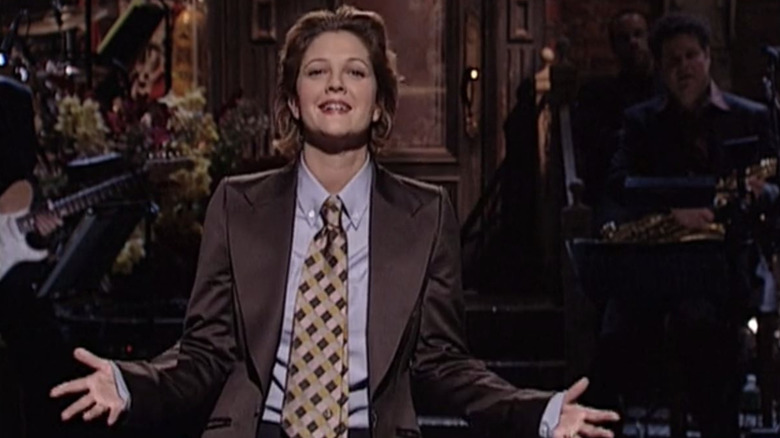
The Fall of 2001 was a tense time in America, to say the least. The 9/11 attacks had permanently altered the course of history as grief and paranoia swept the country over. A brewing war in Afghanistan heralded escalating violence overseas, while at home there appeared a strange, spooky bioterrorism campaign that weaponized the bacteria called anthrax. "Amerithrax," as the FBI called it, involved a series of infected letters mailed to prominent media figures and two Senators, leading to the death of five people and long-lasting health problems for more. 30 Rockefeller Plaza, headquarters of NBC, was among the targets, which meant that "Saturday Night Live" and its host during the height of the attacks, Drew Barrymore, could do nothing but crack jokes knowing that anthrax may have been floating through the building.
The anthrax saga started with the hospitalization and subsequent death of Robert Stevens on October 4, 2001, an event that initially seemed like an isolated incident. However, a malicious pattern emerged as employees at other news outlets, which in New York included ABC, CBS, The New York Post, and NBC, became infected. The target at NBC was "Nightly News" anchor Tom Brokaw, but his personal assistant and the staffer who opened the letter were the two who got infected. As the announcement that an NBC employee tested positive for anthrax arrived on October 12, Barrymore was set to host the day after on October 13. The actress was already nervous about taking a plane so soon after 9/11, but the anthrax news was almost enough to convince her to cancel her plans entirely.
A Saturday Night Scare

"SNL" had just started its 27th season on September 29, a date that had producer Lorne Michaels questioning if it was even appropriate to be funny considering recent events. The season premiere began with then-Mayor Rudy Giuliani and FDNY workers asking New Yorkers to stay strong, a sentiment that Barrymore stated was her inspiration to continue on. "I went back to the hotel, and I thought again about being brave. So, I came back, and I'm here and you're here and you're being brave, too," she announced to the audience during her opening monologue before pointing out her then-husband Tom Green wearing a gas mask.
Barrymore wasn't the only one who nearly gave up, either. In fact, her decision to remain was what convinced Tina Fey to come back after the head writer left 30 Rock in an exasperated panic. According to Fey's account in a profile published in The New Yorker, she was working in the building when the news broke that there was an anthrax attack a couple of floors away:
" 'Nope,' I thought. 'I give up.' I put on my coat, walked downstairs past my friends and co-workers without saying anything. I walked right past the host for that week, sweet Drew Barrymore, without telling her what I had heard. I just went to the elevator and left. Then I walked home and waited to die. Several hours later, Lorne called and said gently, 'We're all here. You and Drew are the only ones who left. And Drew came back a few hours ago, so … we're ordering dinner, if you want to come back in.' It was the kindest way of saying, 'You're embarrassing yourself.' "
During its run of more than 45 years, "SNL" has witnessed and had to adjust to many a major crisis, but the anthrax scare might have seemed like a literal fight for survival. The late-night sketch comedy series, however, is the primary example of a show that must go on.
Read this next: 20 Underrated Comedy Movies You Need To Watch
The post Drew Barrymore Once Hosted SNL Through An Anthrax Threat appeared first on /Film.
